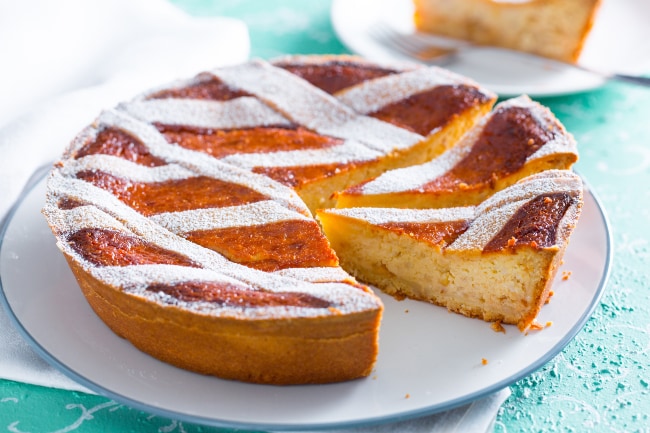
Ingredients and process
The Neapolitan pastiera is an ancient dessert, whose roots date back to the Etruscan era. Over the centuries it has undergone many evolutions, until it became the dessert we know today, with some cornerstones and due differences with which families prepare it.
Lard: traditionally used for pastry, today it can be replaced entirely by butter or half and half.
Honey: it only serves to make the pastry more golden, but it can be omitted.
Sheep or buffalo ricotta: tradition requires only sheep’s milk ricotta, if desired it can be replaced with buffalo milk. In fact, it needs to be quite fat to give the filling body, creaminess and the right amount of moisture.
Grain: by now it is customary to use the precooked both at home and in pastry shops, traditionally we started from raw wheat. It can be done and it must be boiled, the times will necessarily lengthen.
candies: it would be preferable not to omit them. They only serve to give aroma, but they favor the shelf life of the pastiera. You can use only orange, citron and orange or only citron, according to taste.
Cinnamon: there are those who insert it in the filling and those who don’t, it depends on personal tastes and on the tradition of one’s family. Cinnamon is a precious spice, certainly decades ago not everyone could afford it. It’s a recent addition.
Blend the stuffing: you can choose not to do it or to blend only a part of it. It serves to give more creaminess. It depends on your tastes.
History and Legends
Legend has it that to thank the goddess Partenope, 7 ingredients were given as a gift to the sea, then returned by the goddess herself in the form of a dessert: the pastiera. Another story has Maria Teresa of Austria as the protagonist, nicknamed by the Neapolitans “the queen who never laughs” and who instead, just by tasting the pastiera, for the first time let a smile slip away. Yet another story would place the birth of the pastiera among the nuns of a convent in San Gregorio Armeno.
The most accredited historical information instead concerns two texts: in “Lo cunto de li cunti” (1634 ca) by Giambattista Basile in the story of: “La gatta Cenerentola”, within the banquet scene the pastiera would be mentioned. We have to wait until 1837, the cookbook by Ippolito Cavalcanti, to see the first draft of the pastiera recipe.
The number 7: that of the lozenges on the pastiera, 4 above and 3 below, of the 7 ingredients that make up the pastiera and like the number of decumani of the city of Naples.
The lozenges they are also called jealousies: according to a legend, in fact, they would remember the grates (exactly jealousies) placed at the windows so as not to be able to peek inside the houses and remove other people’s wives and daughters from prying eyes.